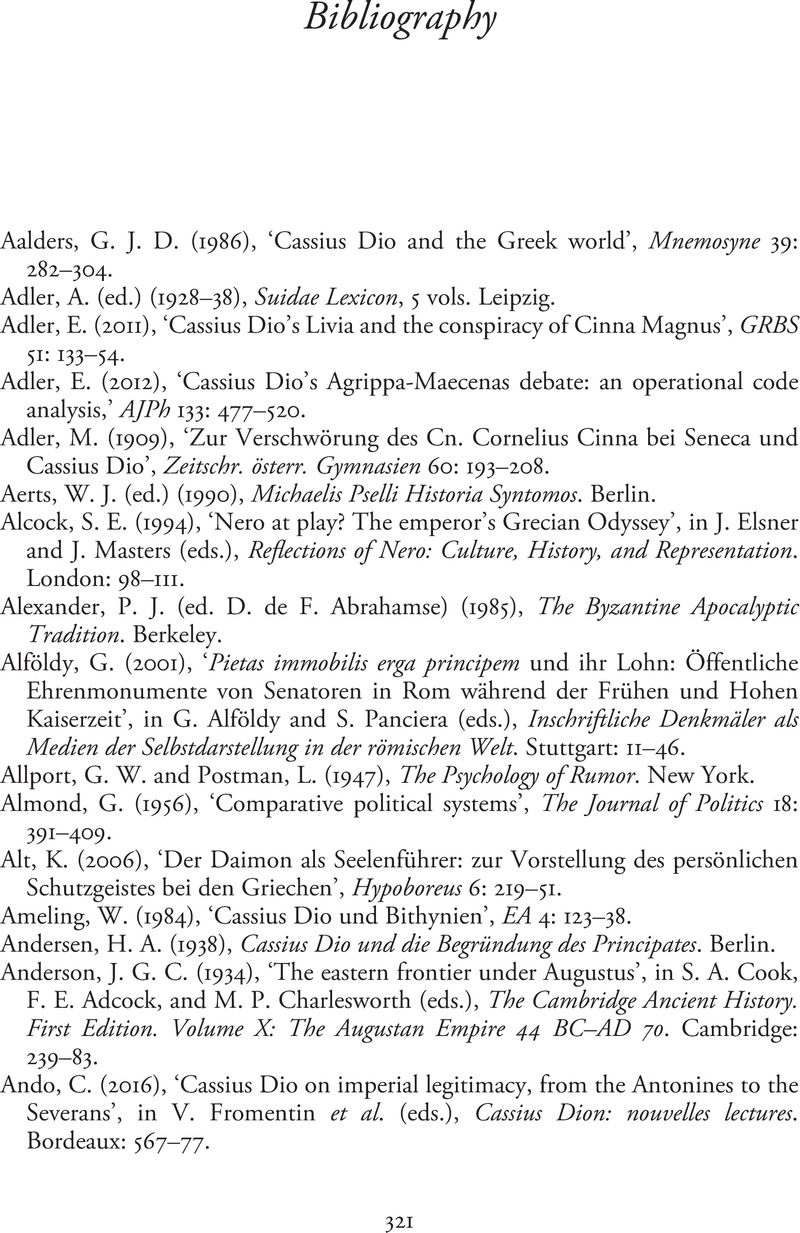Book contents
- Emperors and Political Culture in Cassius Dio’s Roman History
- Emperors and Political Culture in Cassius Dio’s Roman History
- Copyright page
- Contents
- Figures
- Contributors
- Preface
- Abbreviations
- Introduction Cassius Dio
- I Imperial and Political Narratives
- II Emperors and Biographies
- III Political Groups and Political Culture
- IV Reception and Reflection
- Bibliography
- Index
- References
Bibliography
Published online by Cambridge University Press: 23 July 2021
- Emperors and Political Culture in Cassius Dio’s Roman History
- Emperors and Political Culture in Cassius Dio’s Roman History
- Copyright page
- Contents
- Figures
- Contributors
- Preface
- Abbreviations
- Introduction Cassius Dio
- I Imperial and Political Narratives
- II Emperors and Biographies
- III Political Groups and Political Culture
- IV Reception and Reflection
- Bibliography
- Index
- References
Summary

- Type
- Chapter
- Information
- Emperors and Political Culture in Cassius Dio's Roman History , pp. 321 - 350Publisher: Cambridge University PressPrint publication year: 2021

